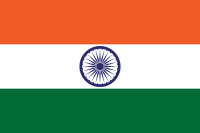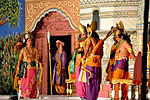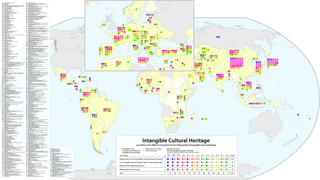
UNESCO's list of intangible cultural heritage from India includes fifteen examples (all are intangible cultural heritage). [1] The latest cultural heritage included in the list is Garba, a tradition dance form from Gujarat. No examples from India were included in the "Intangible Cultural Heritage in Need of Urgent Protection" and "Register of Good Safeguarding Practices".
Contents
The inclusion of new heritage elements in UNESCO's lists of intangible cultural heritage is determined by the Intergovernmental Committee for the Safeguarding of Intangible Cultural Heritage established by the convention. [2] In India, Ministry of Culture is charged with preservation, promotion and dissemination of culture of India. [3]
India was added to the list for the first time in 2008 (at that time total three examples were added).
According to UNESCO, intangible cultural heritage includes holidays, festivals, performances, oral traditions, music and handicrafts were included in the list.
Nowruz or Navroz is the only object in the list which is shared by twelve countries. Navroz in India is celebrated mainly by Parsi community (Indian Zoroastrianian community). [4] [5]








